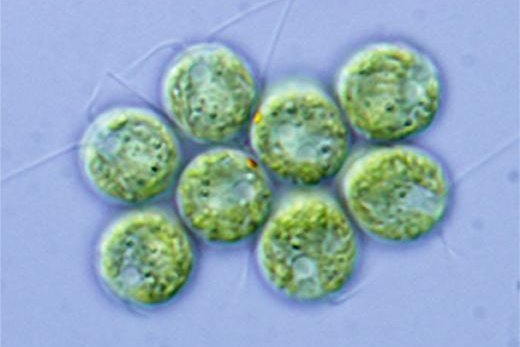A gene found in the eight-celled green algae Gonium pectorale is key to multicellularity. Photo by Kansas State University
MANHATTAN, Kan., May 5 (UPI) -- Pond scum-skimming biologists at Kansas State University say they've discovered clues to the origins of multicellularity in algae genes.
Scientists discovered a single gene, retinoblastoma, or RB, that they believe allowed single-celled organisms to evolve into multicellular organisms.
The discovery, detailed in the journal Nature Communications, undermines previous theories that suggests multicellularity required a combination of genes.
Additionally, the gene has previously been found to be defunct in many cancer patients -- confirming its importance to the job of governing cell replication.
"Rather than the situation where hundreds of genes have to evolve simultaneously, it's a very subtle change in one gene that causes a reprogramming of the cell cycle," Brad Olson, an assistant professor of biology, said in a news release. "Not only did we find a critical gene for multicellularity, it turns out to be a tumor suppressor and it is much easier to evolve multicellularity than anticipated."
It's so easy to evolve multicellularity that the quality has been evolved independently several hundred times.
"It is well-known that plants, animals and fungi evolved independently, but so did red, green and brown algae, volvocine algae, slime molds and bacteria; it's a process that has happened many, many times," said researcher Erik Hanschen, a doctoral student at the University of Arizona. "The result we find with RB is intriguing because this pathway and this gene are shared among so many of these independent multicellular groups, which are separated by hundreds of millions of years."
Researchers found RB in the genome of the multicellular algae species Gonium pectorale and the single-celled algae species, a close relative, Chlamydomonas reinhardtii, but further analysis revealed small structural differences between the two genes.
When scientists took the RB from Gonium and implanted it in Chlamydomonas, the latter developed multicellularity.
"Gonium is representative of the first steps toward the evolution of complex multicellular organisms such as plants and animals," Olson said. "These findings have the potential to help scientists understand the origin of cancer and may contribute to future abilities to treat and detect cancer."















